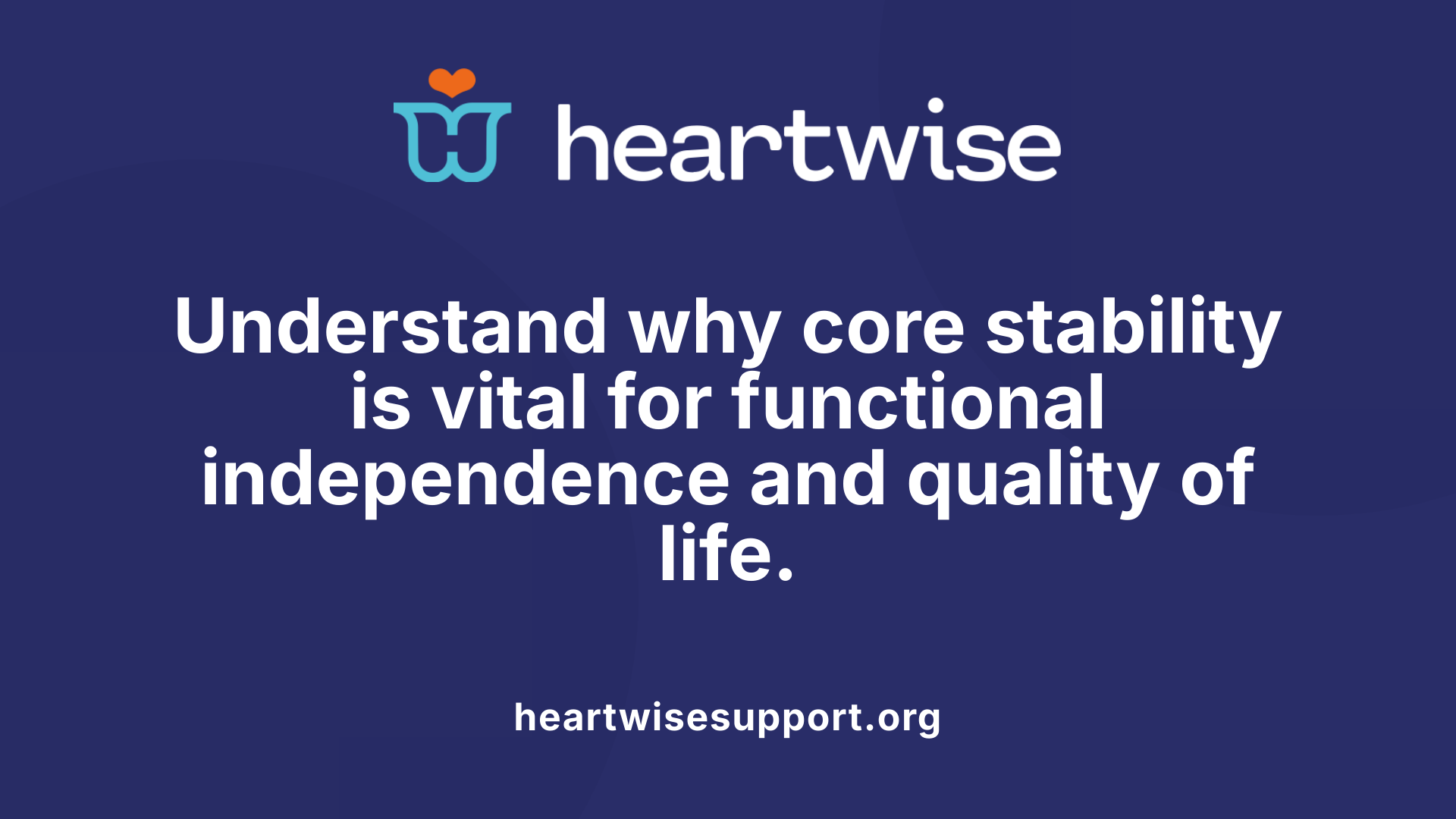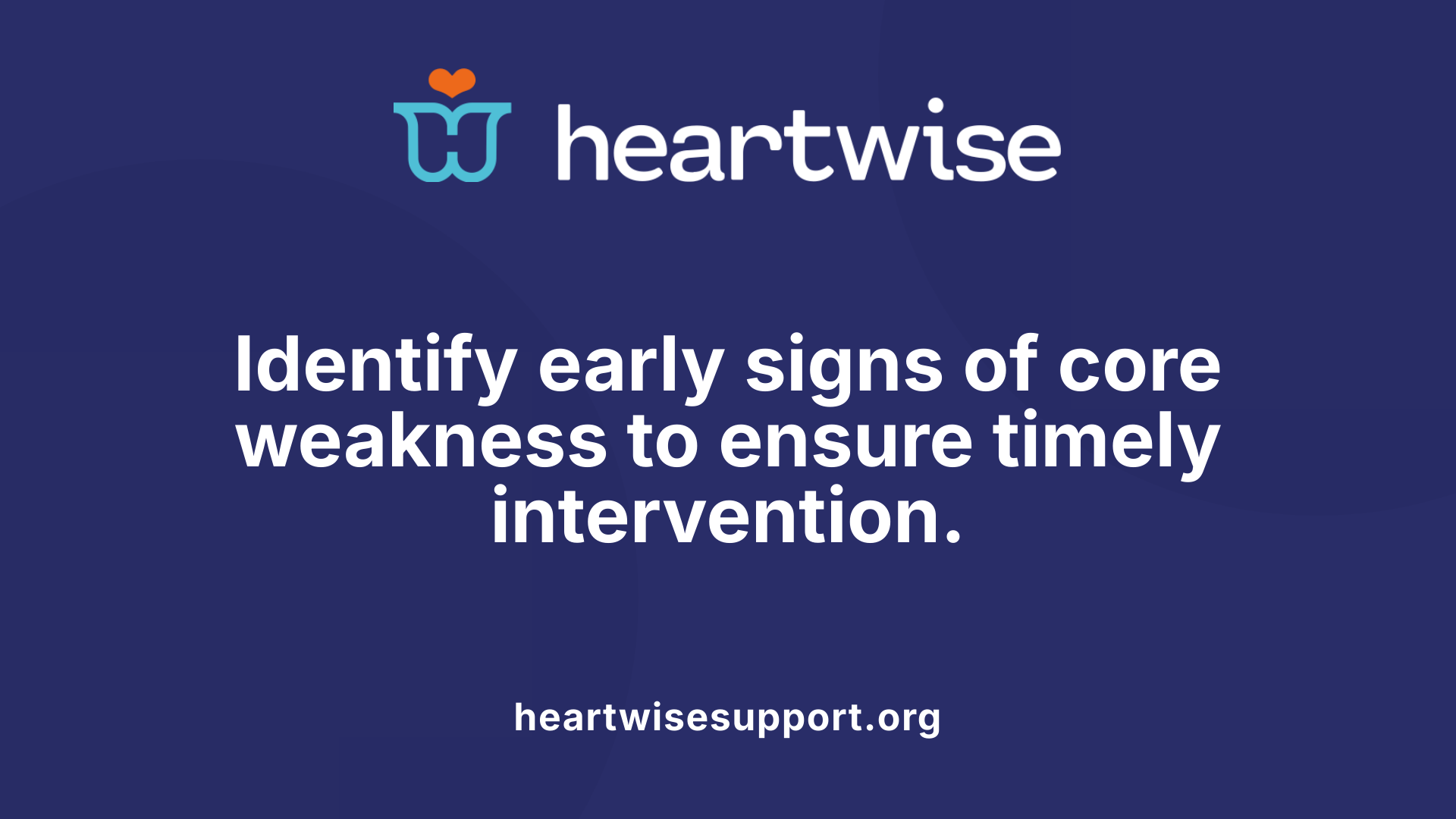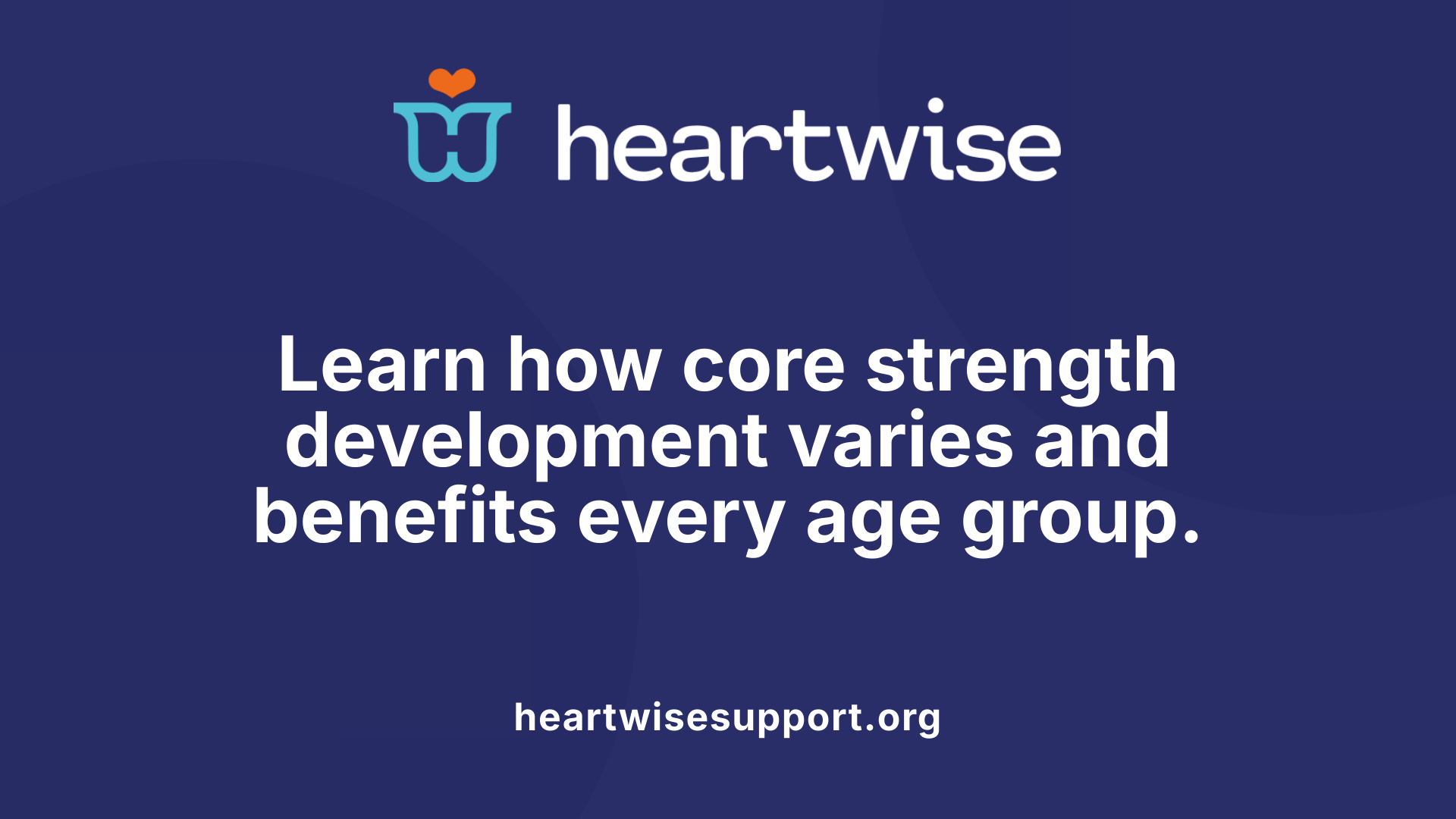Understanding the Foundation of Movement and Posture
Core stability is a fundamental aspect of occupational therapy that influences posture, balance, and overall functional movement. It involves strengthening the muscles around the spine, pelvis, and abdomen that support the body's upright posture and enable efficient movement. Developing a strong core helps prevent injuries, alleviates pain, and improves performance in daily activities across all age groups. This article explores the importance of core stability, effective exercises, therapeutic approaches, signs of weaknesses, and resources that occupational therapy utilizes to promote optimal core strength.
The Significance of Core Stability in Occupational Therapy

What is the importance of core stability in occupational therapy?
Core stability plays a pivotal role in occupational therapy because it serves as the foundation for maintaining proper posture, balance, and efficient movement. When the core muscles—comprising the abdomen, pelvis, back, neck, and shoulder stabilizers—are strong and well-coordinated, individuals can perform daily tasks with greater ease and safety.
A stable core supports the spine and neck, reducing the likelihood of pain and injury due to improper movement patterns or muscular imbalances. This stability is essential for functional independence, enabling activities ranging from basic self-care to complex task execution like lifting, bending, and fine motor activities.
In therapy, assessing a patient's core strength and control informs targeted interventions. Therapists utilize exercises such as planks, bridging, and controlled movements to improve core neuromuscular activation. Breathing techniques and movement retraining are also integrated to enhance stability.
Improving core stability offers benefits across various populations. For children, it facilitates the development of gross motor skills, balance, and coordination. For adults—especially those experiencing back pain or recovering from injury—it contributes to pain reduction, injury prevention, and better posture.
Including core stabilization exercises within therapy plans not only enhances overall physical function but also decreases the risk of injury during everyday activities. This holistic approach supports long-term independence and helps individuals maintain active, healthy lifestyles.
By focusing on core strength, occupational therapy aims to optimize mobility, control, and resilience, ultimately fostering better quality of life.
Effective Core Strengthening Exercises in Occupational Therapy
What are effective core strengthening exercises used in occupational therapy?
Occupational therapy employs a variety of exercises aimed at strengthening the muscles of the trunk, neck, and pelvis—collectively known as the core. Classic exercises like planks, side planks, bridges, and bird dogs are fundamental. These activities target key muscles such as the abdominals, lower back, pelvic floor, and diaphragm, promoting stability and postural control.
Beyond traditional movements, functional and active exercises enhance core strength and neuromuscular control. Examples include Pallof presses, Russian twists, and ball roll-outs. These are designed to challenge the core in dynamic ways that mimic everyday movements, improving balance and coordination.
For children or individuals with limited mobility, these exercises can be adapted for sitting or supported standing positions. Activities such as reaching out of support base, gentle trunk rotations, or controlled perturbations can effectively activate core muscles without requiring full mobility.
Documentation throughout therapy is crucial. Therapists record the patient’s ability to perform specific exercises, the cues needed, tolerance levels, and any improvements in balance or posture. Tracking these changes helps tailor ongoing therapy plans, ensuring progressive challenges and steady improvement.
In summary, effective core exercises combine traditional activities like planks and bridges with functional movements such as trunk rotations and ball exercises. These can be scaled and adapted to suit individual needs, ensuring accessible and meaningful therapy sessions that promote strength, stability, and overall functional capacity.
Techniques and Approaches to Improve Core Stability through Occupational Therapy

How can occupational therapy improve core stability through techniques and approaches?
Occupational therapy plays a vital role in enhancing core stability by employing a variety of specialized techniques tailored to each patient's needs. The process begins with a thorough assessment of the patient's trunk and pelvic muscles. Therapists evaluate muscle strength, endurance, and neuromuscular control, identifying weaknesses or imbalances that may hinder postural stability and movement.
Following assessment, therapists develop individualized treatment plans that target specific core muscles, including those around the back, abdomen, pelvis, and neck. These plans often incorporate targeted exercises such as planks, bird dogs, pelvic tilts, and deep core muscle activations like pelvic floor breathing. These exercises are designed to promote neutral spinal alignment and functional control.
A key component of therapy involves progressively increasing the difficulty of exercises to challenge the core in dynamic and functional contexts. Therapists embed core stabilization movements into activities that mimic daily tasks, such as reaching, bending, and lifting, enhancing the transfer of skills to real-life situations.
Education also plays a crucial role. Patients learn proper movement techniques, breathing strategies, and muscle engagement cues, empowering them to maintain proper posture and control during everyday activities. This approach helps prevent compensatory patterns that could lead to discomfort or injury.
Ultimately, integrating core stabilization exercises within occupational therapy aims to reduce pain, improve posture, bolster balance, and enhance overall functional independence. Regular practice of these tailored exercises supports long-term stability, mobility, and confidence in both children and adults.
Recognizing Signs of Decreased Core Stability

What are the signs and symptoms of decreased core stability?
Decreased core stability can manifest in several observable ways. One of the most common signs is poor posture, such as slouching or difficulty maintaining an upright position when sitting or standing. This occurs because weak core muscles fail to support the spine properly. Individuals might also experience chronic or recurring back pain, especially in the lower back, due to insufficient stabilization.
Balance difficulties are another key indicator. People with decreased core strength often stumble, trip, or find it challenging to stand on one leg. These issues arise because the core muscles play a crucial role in maintaining stability during movement.
Daily tasks can become more difficult for those with weak core muscles. Simple actions like lifting objects, dressing, or getting up from a chair may require extra effort or assistance. Fatigue is also common, as the muscles tire quickly and are unable to hold the body steady during physical activity.
Signs of decreased stability extend beyond physical symptoms. Behaviorally, a person may avoid engaging in physical activities or sports due to a fear of falling or previous instability. They may rely heavily on arms or compensatory movements to perform routine tasks, which can lead to further imbalance and poor coordination.
Overall, recognizing these signs early allows for timely intervention through strengthening exercises and therapy, improving posture, balance, and overall confidence in movement.
Core Strength Across the Lifespan: From Childhood to Older Adults

Why is core strength important across different age groups?
Core strength plays a vital role throughout life, underpinning many essential functions. It involves muscles around the spine, abdomen, pelvis, neck, and hips that keep the trunk and head stable, aligned, and erect, especially when limbs are in motion.
In childhood, developing strong core muscles is crucial for achieving motor milestones such as sitting, crawling, and walking. It provides the foundation for fine motor skills like handwriting and cutting, improves attention and posture in school, and supports everyday independence.
For adults, a robust core enhances physical activity, athletic performance, and daily tasks. It prevents injuries by stabilizing the spine during movement and reduces strain on muscles and joints.
Older adults particularly benefit from core strength because it directly supports balance and postural control. Improved core stability decreases fall risk, helps maintain mobility, and promotes independence.
Activities like sitting exercises, balance games, and resistance training can be scaled for different ages and abilities to continuously promote core strength.
How does core development impact children?
In children, core development begins early, starting with tummy time in infancy and progressing through crawling, sitting, and standing activities. A lack of core strength can manifest as poor posture, fatigue, difficulty on playground equipment, or delays in motor skills.
Occupational and physical therapy interventions include fun activities such as animal walks, ball exercises, obstacle courses, and playground play, aimed at improving strength and control.
Engaging children in daily activities that promote core stability—like climbing, swinging, and balancing—helps develop coordination, endurance, and confidence.
How does sedentary behavior affect core health?
Sedentary lifestyles and excessive screen time decrease opportunities for physical activities that naturally build core strength. This decline can lead to muscle weakness, poor posture, and increased risk of obesity and related health issues.
Encouraging outdoor play, active games, and movement breaks is essential for maintaining and improving core health in both children and adults.
What are the advantages of maintaining core strength in adulthood?
In adulthood, maintaining core strength supports efficient movement, reduces back pain, and lowers injury risk. It also enhances balance and coordination, allowing individuals to perform daily activities more comfortably.
Strengthening the core through exercises like planks, bridges, and resistance training can lead to improved posture and muscle endurance, contributing to overall well-being.
Why is core stability critical for older adults?
For older adults, core stability is critical in preventing falls and maintaining independence. It stabilizes the spine during movement, improves reaction time, and aids in performing everyday activities such as standing up, dressing, and cooking.
Activities like balance exercises, yoga, and functional movement training are effective ways to enhance core strength in aging populations.
| Age Group | Core Development Focus | Common Activities and Exercises | Goals |
|---|---|---|---|
| Infants | Tummy time, rolling, sitting, crawling | Tummy time, gentle rolling, supervised sitting games | Posture control, gross motor milestones, muscle activation |
| Children | Balance, coordination, fine motor skills | Animal walks, playground activities, resistance exercises | Motor skill refinement, confidence, posture stability |
| Adults | Fitness, injury prevention, posture support | Core exercises like planks, deadlifts, stretching | Enhance performance, reduce pain, sustain activity |
| Older Adults | Fall prevention, mobility, independence | Balance training, yoga, functional lifting exercises | Improve stability, reaction time, gait, and confidence |
A comprehensive approach to core training tailored to different ages can promote lifelong health and functional ability, ensuring individuals move confidently and safely at every stage of life.
Resources and Strategies to Support Core Stabilization in Occupational Therapy

What resources and treatment ideas are available for enhancing core stabilization in occupational therapy?
Occupational therapists utilize a diverse array of resources and methods to promote core stabilization. These include structured exercise protocols, assessment tools, and educational materials like exercise cards, tracking and monitoring forms, and creative activity ideas. These resources help children and adults engage in targeted exercises aimed at strengthening core muscles.
Key exercises such as planks, bridges, Superman poses, animal walks, and balance activities are among the most effective. These exercises focus on activating deep core muscles—including the transversus abdominis, multifidus, pelvic floor muscles, and diaphragm—as well as the larger global muscles responsible for gross movement. The goal is to improve overall posture, balance, and motor coordination.
Therapists often incorporate activities that are functional, weight-bearing, and segmental to retrain motor control and enhance joint stabilization. For example, segmental control activities may include holds and controlled movements focusing on specific muscle engagement before progressing to more dynamic, functional exercises.
Each therapy plan is individualized, with exercises tailored based on thorough assessments of the patient's strengths and weaknesses. Progression is carefully planned from simple, segmental activities to complex, weight-bearing, and functional movements that mimic everyday tasks.
Employing playful and engaging activities—such as balancing games, obstacle courses, or dynamic play—helps make these exercises accessible and motivating. Incorporating core stabilization exercises into daily routines ensures sustained improvement over time.
Research supports these approaches, showing that exercises emphasizing deep core muscles and functional control help improve posture, balance, and overall motor skills. This comprehensive approach makes occupational therapy effective in building lasting core strength and stability, vital for both children’s development and adult rehabilitation.
Fostering Long-Term Core Stability for Better Life Quality
Developing and maintaining strong core stability is a cornerstone of effective occupational therapy. It ensures proper posture, balance, and functional movement necessary for independence and safety. Ongoing assessment, personalized exercises, and engaging activities tailored to individual needs are vital for success. Whether working with children to support motor development, adults recovering from injury, or older adults aiming to prevent falls, occupational therapy plays a crucial role in enhancing core strength. By integrating educational resources, functional exercises, and playful activities into therapy, clinicians can promote long-term benefits, ultimately leading to improved quality of life and sustained physical health.
References
- Sitting Core Strength - The Note Ninjas
- 6 Core Exercises PTs and OTs Can Introduce to Older Patients
- 9 Fun Core Strengthening Activities for Fine Motor Skills
- Core Strength | Gross Motor | Therapy Resources | Tools To Grow, Inc.
- Your Child's Core Strength & Core Stability: Why It Matters
- Core stability | Children Young People and Families Online Resource
- 40 Core Exercises for Kids - Fun in Occupational Therapy
- Understanding the Importance of Core Strength in Children











